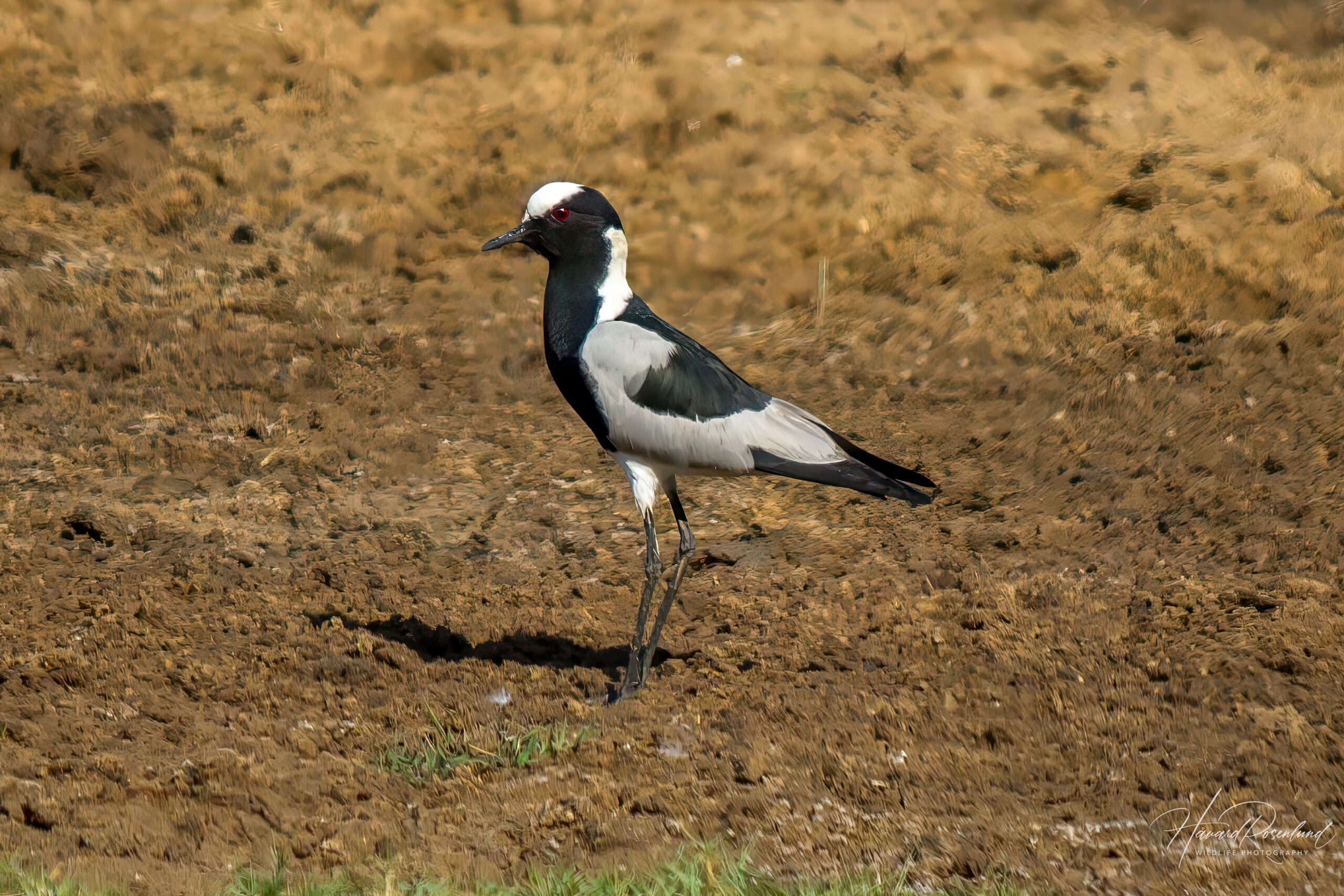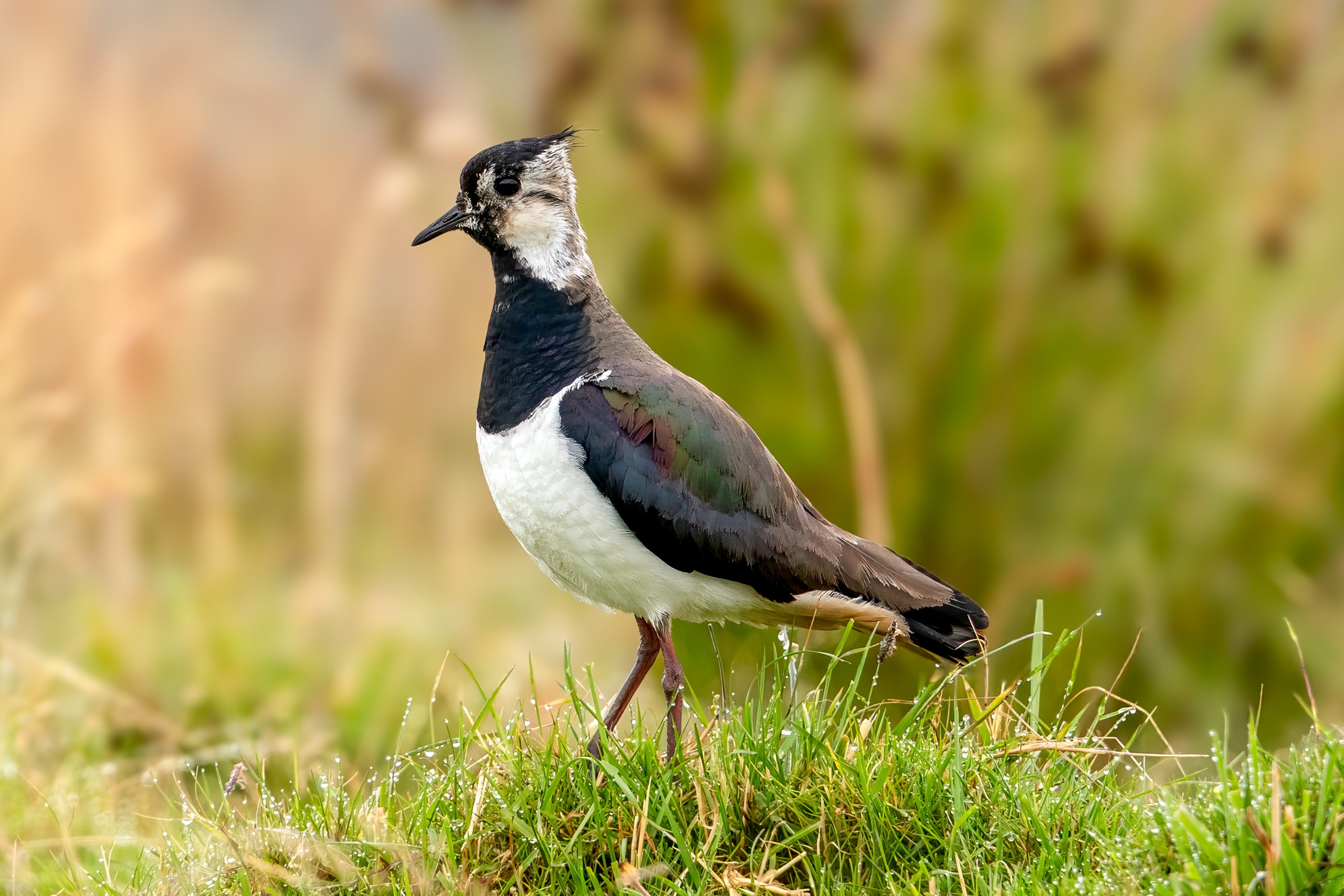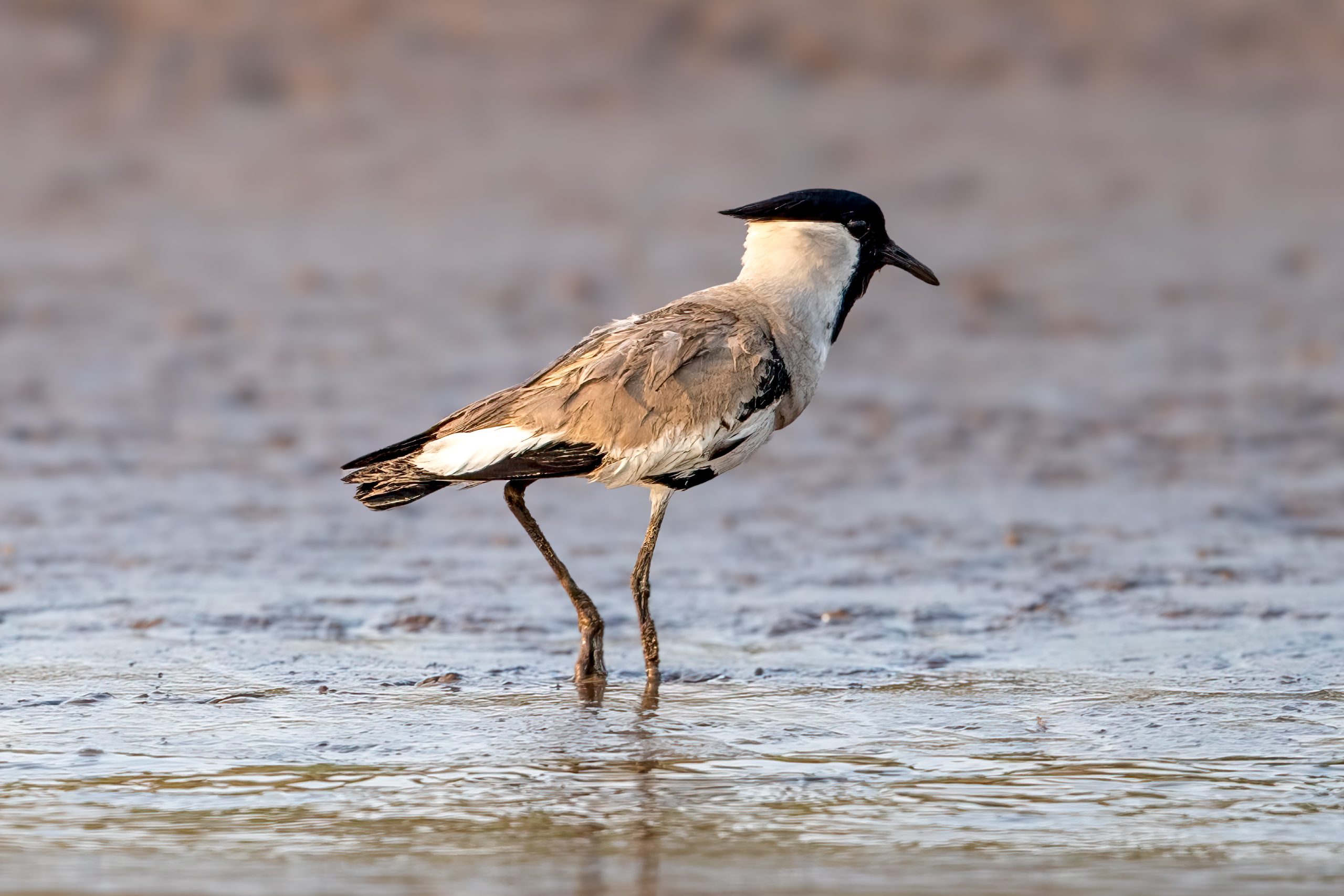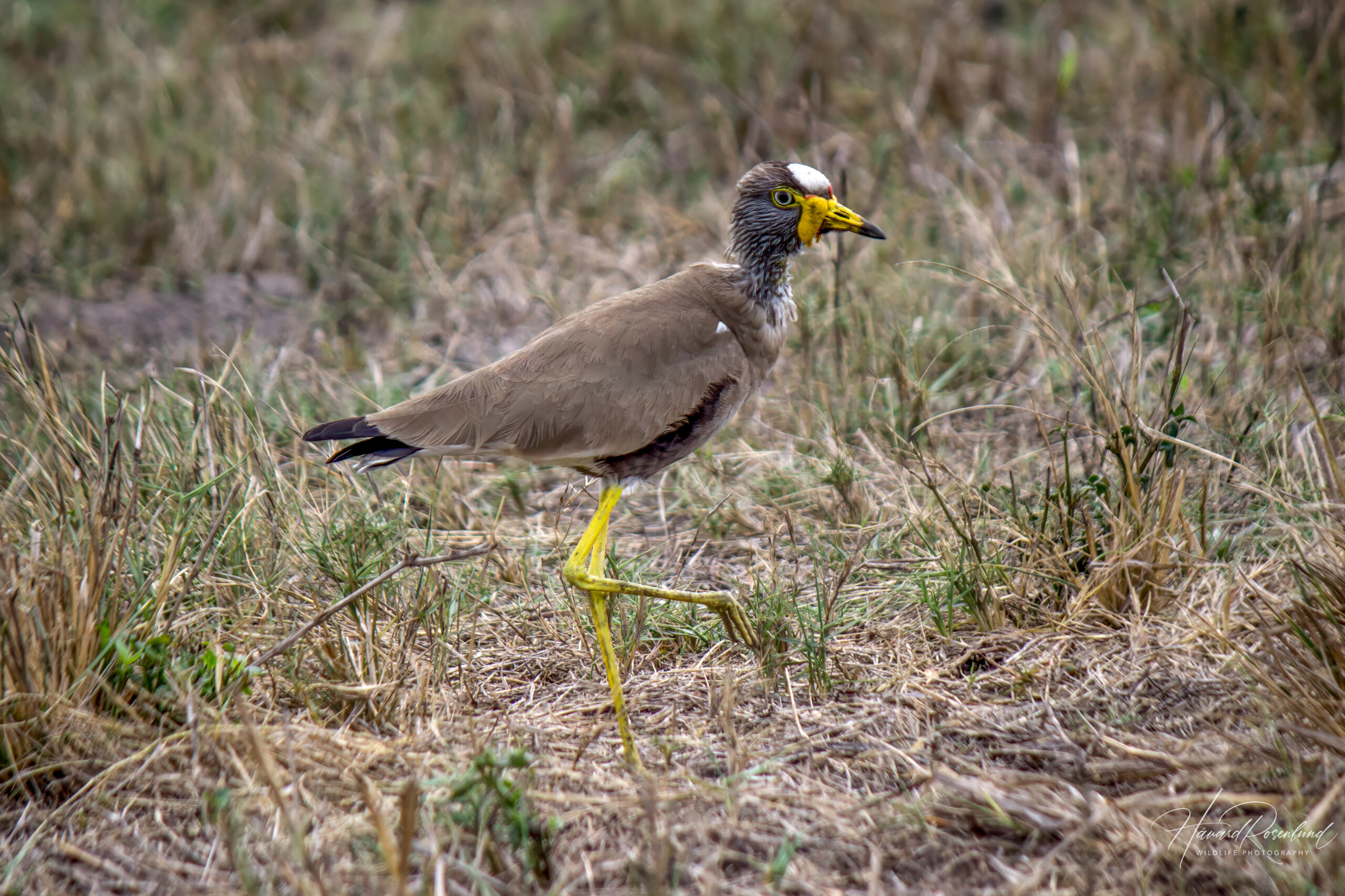Description
The blacksmith lapwing (Vanellus armatus), also known as the blacksmith plover, is a distinctive bird found predominantly in Africa south of the equator. It measures approximately 29 to 31 centimeters (11.4-12.2 inches) in length. The species is characterized by its black, white, and grey plumage. Its face, throat, and breast are black, contrasting with the white lower belly and undertail. Wings are mostly grey, but the back is black. It has a white neck and forehead. The legs are long and dark, and the eyes are a striking deep red. One of the most distinguishing features is the loud, metallic ‘tink, tink, tink’ call, reminiscent of a blacksmith’s hammer striking an anvil, which is the origin of its name.
Diet & habitat
Blacksmith Lapwings inhabit a variety of habitats, though they show a preference for wetlands, including river edges, marshes, and flooded grasslands. They are also commonly found in agricultural areas and even urban settings. Their diet primarily consists of insects like beetles and termites, as well as other small invertebrates. They forage by walking on the ground, often following grazing animals to catch disturbed prey. Their feeding behavior includes pecking and occasionally running to catch moving prey. Unlike many other bird species, blacksmith lapwings may be more active at night, especially during the full moon.
Nesting
The breeding season for the blacksmith lapwing typically occurs during the rainy season, which varies regionally. They are monogamous, and both parents share responsibilities in nest building, incubation, and caring for the young. These lapwings are known for their aggressive defense of territory and nest, often seen dive-bombing larger animals and even humans that come too close.
Nests are usually simple scrapes on the ground, often lined with some grass and located in open areas for better visibility of approaching predators. The female lays about 2 to 4 eggs. Incubation lasts around 28 to 31 days, predominantly undertaken by the female. Once hatched, chicks are precocial, meaning they are relatively mature and mobile from the moment of birth. Fledging occurs approximately 4 to 5 weeks after hatching.
Status
The blacksmith lapwing is widespread and common, and its ability to live close to humans has seen its population increase. It is listed as least concern on the IUCN Red List.







